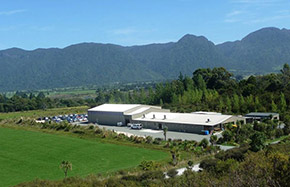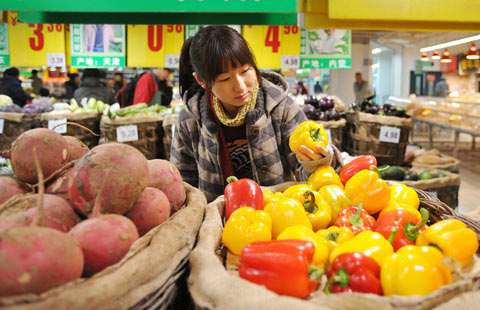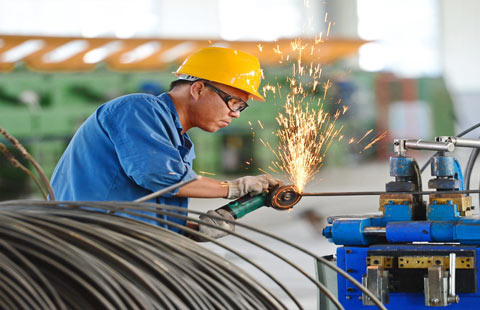China April inflation forecast at around 2.2%
(Xinhua) Updated: 2013-05-08 10:42BEIJING - China's Consumer Price Index (CPI) is likely to grow between 2.2 percent and 2.3 percent in April from a year earlier, slightly up from the 2.1 percent recorded in March, according to forecasts by several institutions.
The official CPI is due to be released by the National Bureau of Statistics on May 9.
The Bank of Communications expects the CPI, a main gauge of inflation, to come in at 2.2 percent in April, and inflation to be mild throughout the second quarter.
The recent outbreak of bird flu and the incident involving the death of pigs in a river in Shanghai have dampened people's appetite for pork, poultry and eggs, bringing their prices down in April, said Tang Jianwei, a senior analyst on macroeconomics at the bank.
Meanwhile, people ate vegetables, fruits and seafood instead, with demand pushing up prices, said Tang.
In terms of non-food prices, Tang said the latest round of property tightening has squeezed some people out of the housing market and pushed up rental demand and rents.
Meanwhile, a cut in fuel prices was seen in April, bringing down the logistics cost of the economy.
First Capital said food prices are expected to rise 3.2 percent in April from a year earlier, contributing 1 percentage point to inflation. The prices for non-food items will rise 1.7 percent, contributing 1.2 percentage points to the CPI increase. The agency also projected the CPI at 2.2 percent.
Shenyin WanGuo Securities put the inflation forecast at 2.3 percent, with the prices for food and non-food items rising 3.1 percent and 1.9 percent year on year, respectively.
The institutions generally believed that the CPI will be mild throughout the first half of the year, citing the Chinese government's frugality campaign, the spread of bird flu, and falling commodity prices in the global market.
But experts warned of the impact of global quantitative easing on China's inflation.
Li Xuesong, deputy director of the Institute of Quantitative and Technical Economics, Chinese Academy of Social Sciences, said the CPI is expected to rise 3.4 percent year on year in 2013, 0.8 percentage points faster than the reading in the previous year. He added that the level is "controllable."
- Top 10 cities with largest GDP
- China strengthens control of housing, land use
- Ofo to utilize homegrown BeiDou navigation system
- China-US economic,trade cooperation a win-win game
- Xiongan New Area to bridge growth disparities: Official
- German company sees bright future for Chinese solar energy
- China needs to accelerate structural reforms to support growth: ADB
- Hisense becomes official sponsor of 2018 FIFA World Cup


















